The Unexpected Origin of Today's Hipster Clothing Trends

By:
In fashion, the philosophy behind why one dresses how they dress or makes what they make frequently defies logic. Oftentimes, entire collections come from bizarre reference points, sometimes from eras long past.
Like colonial times.
From floppy hats to shifts, sartorial parallels to the past are more prevalent than you might imagine. Beyond hipsters wearing old-time clothing just to wear old-time clothing, certain fashion trends can be traced back to the 18th and 19th centuries—and were equally as popular. The surprising fashion bond between Williamsburg, New York, and Colonial Williamsburg, Virginia, is closer than we thought.
Take a look at five clothing items with colonial ties.
1. Capes are the new cloaks.
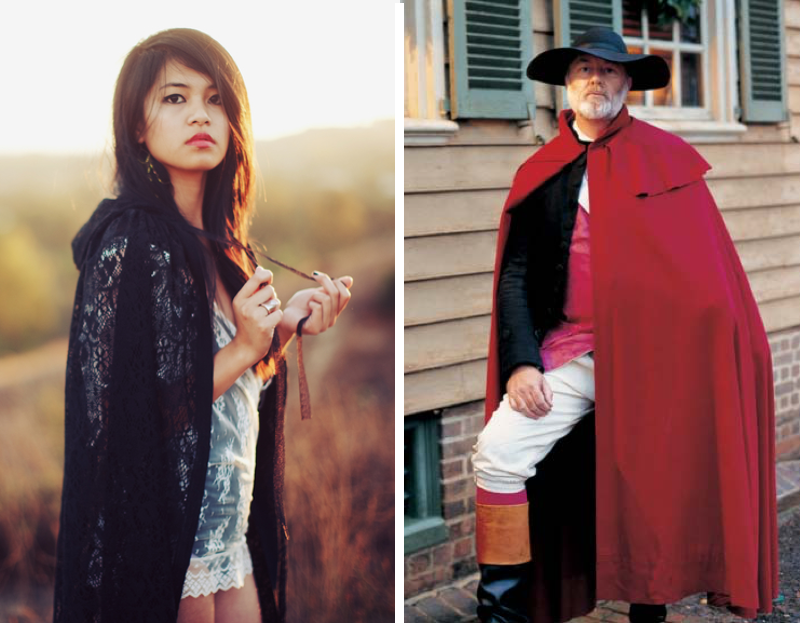 Stocksy & Colonial Williamsburg - history.org
Stocksy & Colonial Williamsburg - history.org
From the dress Lupita Nyong’o wore at the 2014 Golden Globes to Chrissy Teigen’s dress at this year's Grammys, capes have been having a moment for a few years now. If you rewind 300 years, you'll find that capes also were in vogue in Colonial Virginia. These swirly, magical outerwear items came in two forms: the cape and the cloak. The cape was predominantly for women and had a much more utilitarian function. According to Colonial Williamsburg, they were worn as “a protective outer garment ... fastened at the center front and was usually shorter than a cloak.” Cloaks, the longer, more exaggerated cape, were worn by both men and women and were popular as an alternative to coating. The cloak “has been the most enduring of outer garments throughout the history of fashion” and was collared, included a cape over the shoulders, and hung to the knee or below.
2. The Colonial Monmouth cap? It’s a beanie.
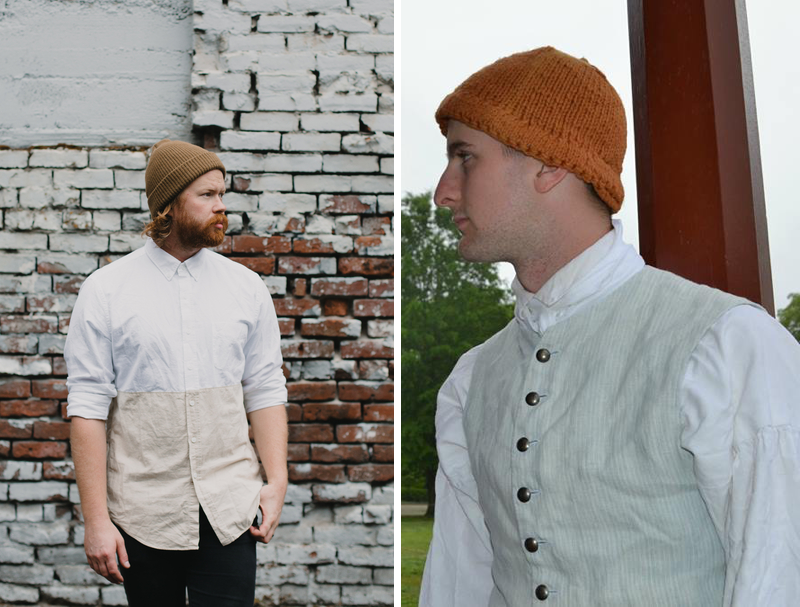 Stocksy & Colonial Williamsburg - facebook.com
Stocksy & Colonial Williamsburg - facebook.com
The perfect little hat for winter warming (or ironic summer hatting), the beanie has become a contemporary fashion staple with its own styling language. Funny enough, these hats were also super popular in colonial America: they were called Monmouth caps and were small knitted woolen caps worn in the 17th and 18th centuries. "The name is derived from one of England's great port cities and its particular associations with seafaring," Colonial Williamsburg explains. These were mostly worn by laborers and sailors, the latter of which were known for knitting them in their free time, selling them “in dock streets for additional income.” Step it up, hipsters!
3. Stay, corsets, stay!
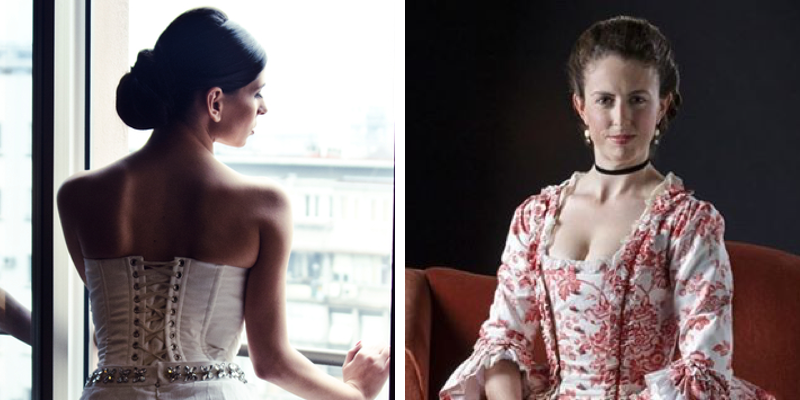 Stocksy & Colonial Williamsburg - instagram.com
Stocksy & Colonial Williamsburg - instagram.com
Thanks to celebrities such as Gigi Hadid and Kim Kardashian, the corset is having a unique moment in fashion. But what preceded the 19th- and 20th-century constrictor? The stay, a foundation garment used in the colonial era. The function of the stay differed slightly from the corset, though. According to Colonial Williamsburg, stays “did much more to support the body and remind one of good posture than they did to cinch the waist.” While they were predominantly worn by women, children also wore stays to help teach them “proper carriage,” which is a fancy way of saying "manners."
4. Man shorts? Try breeches.
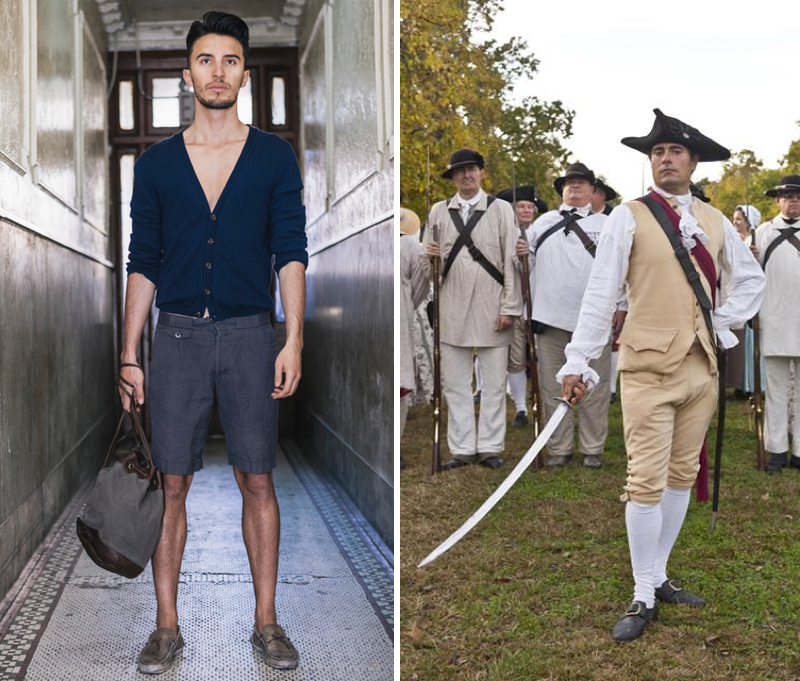 Stocksy & Colonial Williamsburg - facebook.com
Stocksy & Colonial Williamsburg - facebook.com
There was a time when shorts and pants were indistinguishable. While we may scoff at the trend of male shorts getting shorter, short pants were pants in the colonial era. Men wore breeches, which were the most common lower body garment. Their lengths varied but they typically went unseen under the length of waistcoats. What did that mean? “The cut of breeches became tighter and revealed the shape of the leg,” Colonial Williamsburg explains. These bottoms were worn by men of all levels of society, mostly as a means to impress. Pants did exist back then, but it was the laborers, from sailors to slaves, who wore them because they were more utilitarian.
5. Their leggings are your leggings. Kind of.
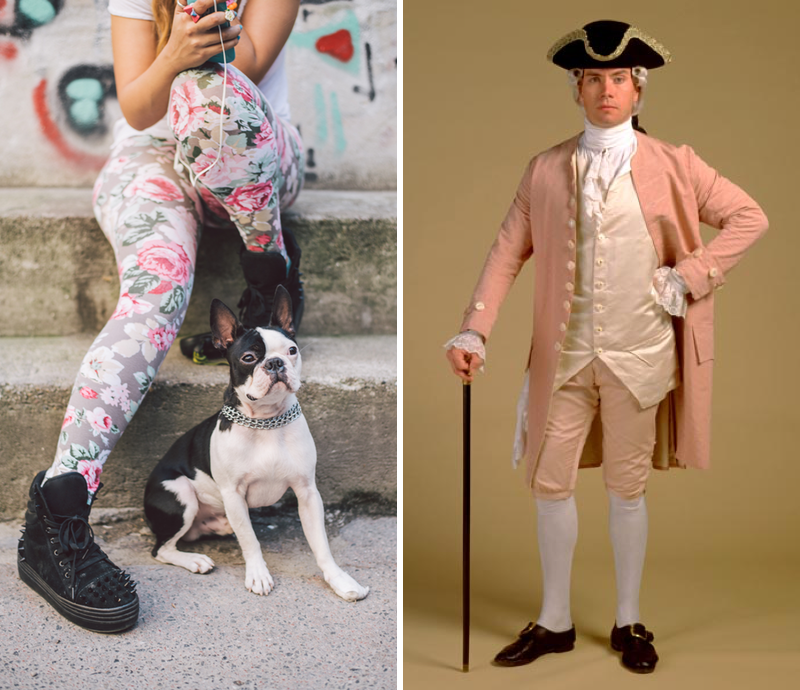 Stocksy & Colonial Williamsburg - history.org
Stocksy & Colonial Williamsburg - history.org
Contemporary leggings have a very diverse role in fashion. People wear them to work or to work out, but regardless of use, they have the same form across the board — but that’s not how they were in colonial times. The colonial legging was popular with men because of breeches — where the lower body garment ended, leggings took over, warming and protecting otherwise exposed skin with coverage from the top of the foot to above the knee. Similar to leggings were spatterdashes, which covered the bottom part of the leg, from mid-shin to top of the foot.
Who knew leggings were this diverse? Colonial Williamsburg did.


